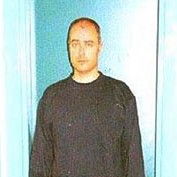
Graham Coutts
Summary
Name:
Years Active:
2003Status:
ImprisonedClass:
MurdererVictims:
1Method:
StrangulationNationality:
United Kingdom
Graham Coutts
Summary: Murderer
Name:
Graham CouttsStatus:
ImprisonedVictims:
1Method:
StrangulationNationality:
United KingdomYears Active:
2003Date Convicted:
February 3, 2004bio
Graham Coutts was a guitarist and part-time salesperson living in Brighton, England, at the time of the 2003 murder of Jane Longhurst. He was in a relationship with Longhurst’s best friend. Coutts reportedly developed a long-standing fixation with violent sexual fantasies and strangulation.
At age 15, he admitted experiencing disturbing sexual thoughts about harming women. In 1991, more than a decade before the murder, he sought psychiatric help after expressing fear that his thoughts might eventually lead to criminal behavior. Psychiatrist Larry Culliford confirmed treating Coutts and noted that his patient worried about losing control.
In adulthood, Coutts developed an addiction to internet pornography, frequently consuming material depicting strangulation, simulated rape, and necrophilia. Evidence later showed that the day before Jane Longhurst’s death, Coutts downloaded graphic images of dead women. Friends and witnesses testified that he had a fetish for necks and had engaged in breath control practices with consenting partners without fatal outcomes.
murder story
On 14 March 2003, Jane Longhurst, a 31-year-old special-needs teacher and musician from Brighton, disappeared. Prosecutors argued that Graham Coutts lured Longhurst to his flat under false pretenses, attacked her, and killed her by strangulation to fulfill violent sexual fantasies he had nurtured since adolescence. Coutts claimed during trial that her death was accidental and occurred during consensual erotic asphyxiation, although no prior romantic relationship between them was proven.
After the killing, Coutts kept Longhurst’s body in his flat for some time before moving it to a rented storage unit at Big Yellow Self Storage in Brighton. He visited the unit 11 times while the body was hidden there. Eventually, Coutts removed the remains and transported them to woodland in West Sussex, where he attempted to destroy evidence by setting the body on fire. On 19 April 2003, authorities discovered Jane Longhurst’s partially decomposed and burned remains.
During trial, Home Office pathologist Dr. Vesna Djurovic testified that Coutts must have been aware of Jane’s medical distress for two to three minutes before death became inevitable. Expert opinion suggested she could have survived if Coutts had acted immediately. This supported the prosecution’s stance that the death was intentional. Defense experts argued that death could have occurred much faster through vagal inhibition, potentially within seconds.
In February 2004, Coutts was convicted of murder and sentenced to life imprisonment with a minimum term of 30 years. In January 2005, his sentence was reduced to 26 years on appeal, though the conviction itself was upheld. Later, in 2006, the House of Lords ruled that the original jury should have been allowed to consider a manslaughter verdict, leading to the murder conviction being quashed.
A retrial began on 11 June 2007 at the Old Bailey. On 4 July 2007, Coutts was found guilty of murder once again, this time by an 11–1 jury majority. The following day, he was sentenced to life imprisonment with a minimum term of 26 years, which he continues to serve.
The case sparked national debate in the UK over the influence of violent pornography on criminal behavior. Jane Longhurst’s mother led a campaign calling for stricter laws against “extreme pornography,” which eventually contributed to Section 63 of the Criminal Justice and Immigration Act 2008, making possession of such material a criminal offense.